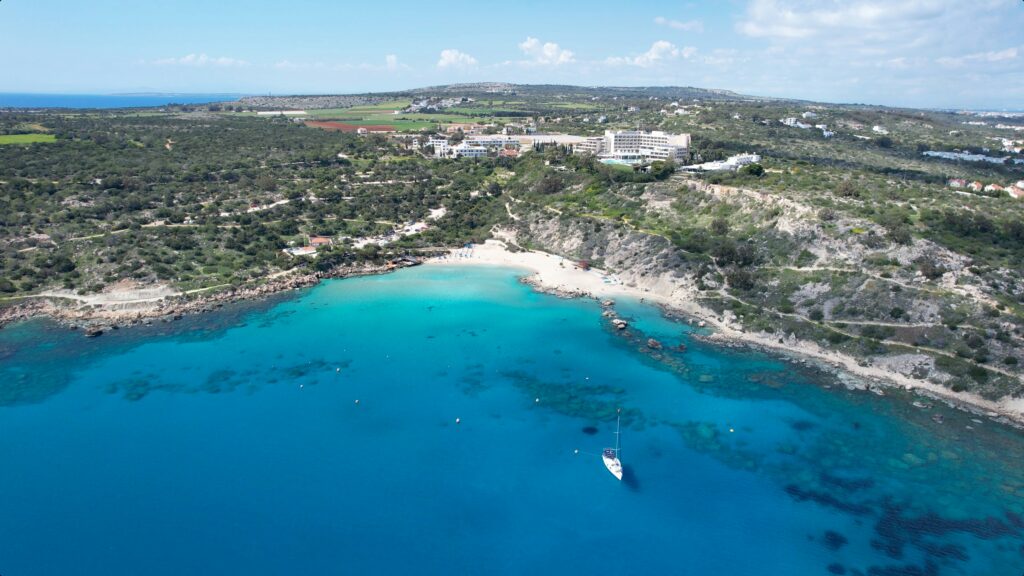
Can I Cross Between South and North Cyprus? Key Entry Tips
So, you’re planning a trip to Cyprus, and you’re wondering about crossing the divide between the South and the North. It’s a question I hear a lot—after all, this beautiful island has a rich tapestry of culture and history that can be explored from both sides. But let’s break this down in a way that’s practical, casual, and, most importantly, honest. Here’s what you need to know.
Understanding the Split
First off, let’s talk about why Cyprus is divided. The island has been split since 1974, following an invasion by Turkey in response to a coup aimed at uniting Cyprus with Greece. As a result, the southern part is the Republic of Cyprus (predominantly Greek Cypriot), while the northern part is governed by the Turkish Republic of Northern Cyprus (recognized only by Turkey). This backdrop makes the crossing quite interesting.
As a traveler, you might find this division adds a layer of complexity, but don’t let it deter you. The crossings are relatively straightforward if you know what to expect.
Where to Cross: The Key Crossings
Popular Crossing Points
There are several official checkpoints where you can cross between the two sides. Here are some of the most popular to consider:
- Ledra Street (Nicosia): This pedestrian crossing is probably the most famous. It’s centrally located and allows you to walk from one side of the divided capital to the other.
- Agios Dometios: This crossing is accessible by car and is more suitable for those traveling with vehicles. It tends to be less crowded, which is a plus.
- Pyla Crossing: Located more towards the east, this spot allows access to both sides while checking out the picturesque village of Pyla.
What to Expect at the Crossing
At any of the crossings, you’ll have to show your passport. Be prepared for customs checks; it can feel a bit formal, but usually, it’s pretty quick. To be honest, the vibe can change depending on the time of day; mornings tend to be bustling, while afternoons can be quieter.
Entry Requirements: What You Need
Documents and Identification
When it comes to crossing the border, a valid passport is non-negotiable. Make sure to keep it handy. Also, while there are no visas required for short visits up to 90 days for most nationalities, it’s always smart to check your specific situation just to avoid any surprises.
If you’re planning to explore both sides, consider carrying a copy of your passport—just in case. It’s also a good idea to have travel insurance that covers any unexpected situations that may arise.
Currency Tips
While both sides of Cyprus have different currencies—the Euro in the South and the Turkish Lira in the North—most places in the north accept Euros. However, having some Lira can be handy for local purchases, like street food or souvenirs. You can easily withdraw cash at ATMs on both sides, but remember to check for any fees from your bank.
Culture Shock: What to Expect
When you cross from one side to the other, you might notice shifts in language, culture, and even food. In the South, the atmosphere can feel more Mediterranean, whereas the North has a distinctive Turkish influence. I mean, who wouldn’t want to try authentic kebabs and revive their taste buds with flavorful Turkish delight? It’s like a mini culinary world tour.
Communication
Greek is primarily spoken in the South, while Turkish is prevalent in the North. In touristy areas, you’ll find English is widely spoken. Still, it’s worth picking up a few phrases in Greek or Turkish—it can make your interactions warmer and more memorable.
Safety and Respect
Crossing the border is generally safe, but, like any travel location, it’s wise to stay aware of your surroundings. Make sure you respect local customs and practices. Dress modestly, especially when visiting religious sites—this goes a long way in both cultures. A simple scarf can transform your outfit into something more suitable for exploring a church or mosque.
Political Sensitivity
Politics in Cyprus can be sensitive, so steer clear of politically charged discussions or any displays of the conflicts that arose from the division. It’s best to immerse yourself in the culture without stepping into contentious territory. Just enjoy the scenery and the intriguing conversations!
Final Thoughts: Embrace the Experience
Crossing between South and North Cyprus isn’t just about getting from one point to another; it’s an opportunity to immerse yourself in the rich, diverse heritage that the island has to offer. So pack your bags, grab that sunscreen (you’ll likely need it), and get ready for a unique experience.
By keeping things simple and relaxed, you’ll be able to fully enjoy everything Cyprus has waiting for you on both sides of the line. Happy travels, and remember to take lots of photos—there’s a lot of beauty to capture!
Related: If you want to explore more about Cyprus, check out this article on the best things to do in Cyprus!
**Related Reading:** – [Related: How to Plan a Solo Trip on a Budget] – [Related: Top Destinations for First-Time Solo Travelers] **#SoloTravel #Cross #South #North #Cyprus #Key #Entry #Tips**
